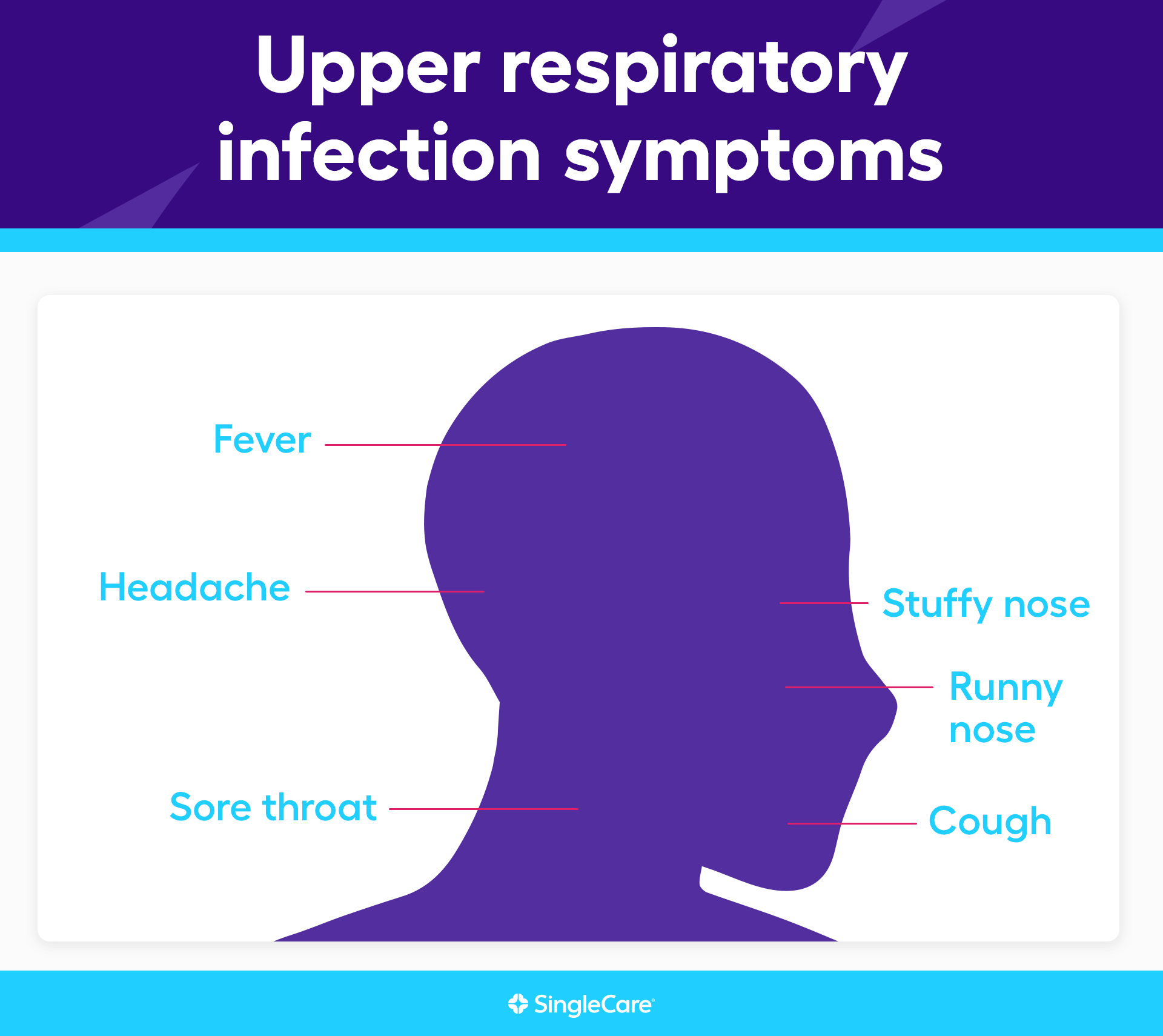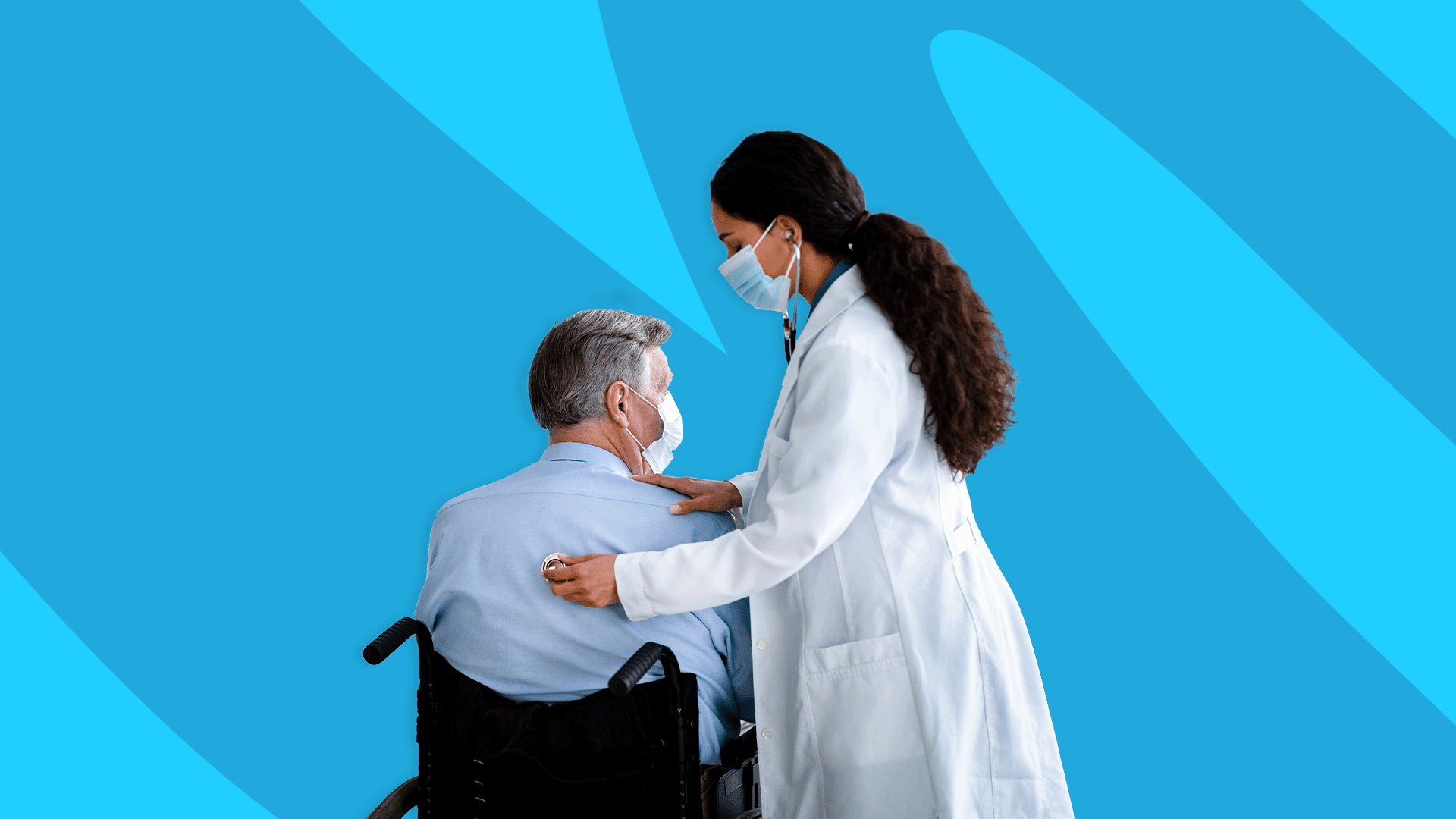Overview: What does an upper respiratory infection feel/look like?
Upper respiratory tract infections (URIs) are among the most common illnesses people experience. Most people will have three or more URIs in a year, mostly from the common cold or flu. Medically speaking, an upper respiratory infection is any infection of the upper airways: the nose, sinuses, throat (pharynx), or upper windpipe (larynx). Most URIs involve coughing, scratchy throat, runny nose, stuffy nose, low fever, and feeling sick. However, some infections might also cause high fever, headaches, body aches, swollen glands, and other symptoms. Most URIs go away in a week or so and don’t require medical attention. Some might be more serious, like bacterial infections, or they might develop into worse infections. That’s when a doctor may be needed.
What are the early signs of an upper respiratory infection?
The earliest signs of an upper respiratory infection generally depend on the type of infection, but the most common early signs include:
Cough
Sore throat
Fever
Runny nose
Stuffy nose
Headache
While symptoms develop gradually for most URIs, symptoms of the flu usually develop very quickly after an incubation period.
RELATED: Flu symptoms 101: is it the flu or something else?

Other upper respiratory infection symptoms
Upper respiratory tract infection symptoms will depend on the type of infection that is causing them.
Colds are caused by several different viruses, but the symptoms are typically the same:
The most common signs of a flu infection are:
Dry, hacking cough
Sore throat
High fever
Runny nose
Aches and pains
Headache
The most common signs of a sinus infection are:
Stuffy nose
Runny nose
Nasal swelling
Postnasal drip
Facial pain
Sinus pressure
Headache
Fever
The most common symptoms of a throat infection are:
Sore throat
Difficulty swallowing
Low fever (viral infection)
High fever (bacterial infection)
Severe muscle pain (bacterial infection)
Watery eyes
Sneezing (viral infection)
Mild headache (viral infection)
Bad headache (bacterial infection)
Lymph node swelling in the neck
Pus or secretions in the throat
Nausea and vomiting
The most common symptoms of tonsillitis are:
Sore throat
Difficulty swallowing
Fever
Headache
Stiff neck
Voice changes
Other infections sometimes start as upper respiratory infections. These include COVID-19 and pertussis. At the start, symptoms are usually very similar to cold or flu symptoms, but worsen when the infection spreads to the lungs.
Upper respiratory infection vs. COVID-19 symptoms
In mild cases, COVID-19 looks a lot like an upper respiratory infection. That’s because it usually is an upper respiratory infection. In more serious cases, COVID starts as a URI and spreads to the lungs. That’s when the trouble starts. Fortunately, 81% of people who catch COVID-19 only have mild cases. Still, even in mild cases, COVID-19 has features that distinguish it from a cold or flu. These include loss of smell, loss of taste, fatigue, and even digestive system problems. Once COVID spreads to the lungs, however, symptoms become more pronounced and serious.
| Shared symptoms |
- Dry cough
- Sore throat
- Fever
- Headache
- Vomiting
- Muscle pain
- Feeling sick
|
| Unique symptoms |
- Runny nose
- Minor aches
- Stuffy nose
- Sore throat
- Postnasal drip
|
- Deep cough
- Loss of taste or smell
- Fatigue
- Diarrhea
- Watery eyes
- Itchy, painful patches on the skin
- Shortness of breath
- Chills
- Chest discomfort
- Drowsiness
- Signs of inadequate oxygen, such as blue skin or cold, clammy skin
- Confusion
- Coma
|
RELATED: 8 steps to take if you think you have COVID-19
Types of upper respiratory infections: How can I tell which one I have?
There are several types of upper respiratory infections. Healthcare professionals are most interested in the cause of infections, so they categorize them as colds, flu, or bacterial infections. However, symptoms are also based on what parts of the upper respiratory system are involved: the nose, sinuses, throat, or larynx.
Rhinitis refers to infections of the nose and throat, so healthcare professionals call these infections nasopharyngitis. Almost all cases of nasopharyngitis are due to cold viruses, such as rhinovirus (“nose” virus) and flu. The most obvious signs are a runny or stuffy nose and postnasal drip.
Sinusitis involves infections of the sinus membranes. The sinuses are hollow spaces in the skull, located above and below the nasal passage. Most sinus infections are viral infections. However, bacterial infections cause some of the most serious sinus infections. The most obvious signs of a bacterial sinus infection are facial pain, sinus pressure, and postnasal drip.
Tonsillitis describes infections of the tonsils. These are lymph nodes located at the top of the throat. Tonsil infections are almost always due to a streptococcus bacterial infection, but the flu virus can also infect this area. The most obvious signs are soreness and swelling at the back of the mouth and throat.
Pharyngitis is a throat infection. This extends from the back of the mouth to the epiglottis, the flap that covers the larynx. Cold and flu viruses are the most common causes of throat infections. Strep throat, caused by the streptococcus bacterium, is the most serious cause of a throat infection. Most COVID-19 infections start as throat infections. The most obvious sign of a throat infection is a sore or scratchy throat.
Laryngitis is an infection of the larynx, the start of the windpipe. The larynx feels like a hard, bony lump at the front of the neck. Flu and some cold viruses are the most common causes of laryngitis, but streptococcus and other bacteria can also infect the larynx. The most obvious signs of a larynx infection are sore throat and cough. Since the larynx also contains the voice box, hoarseness or other voice changes are common signs as well.
The bad news is that “when it rains, it pours.” Most upper respiratory tract infections colonize more than one part of the upper airways. As a result, many will have to endure a runny and stuffy nose because of rhinitis, sore throat because of pharyngitis, sinus pain and postnasal drip because of sinusitis, and a nasty cough because of laryngitis or pharyngitis.
When to see a doctor for upper respiratory infection symptoms
See a healthcare provider if a URI has any symptoms characteristic of a bacterial infection or if the infection is affecting breathing. High fever, severe sinus pain, lymph node swelling, and presence of pus or mucus indicate that bacteria are involved. Shortness of breath, deep coughing, and wheezing are signs that the lungs are involved. If breathing ever becomes labored or if there are signs that a person is not getting enough oxygen, go to an emergency room.
In most cases, the healthcare provider will diagnose an upper respiratory tract infection based solely on the symptoms. If a bacterial infection, COVID-19 infection, or worse is suspected, the doctor will take a sputum culture or throat swab to try to identify the bug.
Complications of an upper respiratory infection
Complications are uncommon for upper respiratory infections. Most colds resolve without any problems. However, untreated bacterial infections can cause some of the worst complications. The flu can cause a few problems as well.
The most common complications of viral upper respiratory infections (colds and flu) are:
Bacterial infections of the sinuses, tonsils, and throat can cause a host of complications if they are not effectively treated. These include:
Ear infections
Bone infections
Abscesses
Blood infections
Meningitis
RELATED: What groups are at high-risk for flu complications?
How to treat an upper respiratory infection symptoms
Most cold and flu infections can be managed with plenty of rest, plenty of fluids, humidifiers, saline nasal washes, gargling with salt water, vitamin C supplements, and over-the-counter symptom relief medications. These include pain relievers, fever reducers, antihistamines, expectorants, nasal sprays, and nasal decongestants.
The common cold is rarely a cause for concern. In most cases, colds resolve in about ten days without causing other problems. However, the flu could worsen and spread to the lungs. Some people are more vulnerable than others, so they may need prescription antiviral medications, such as Tamiflu (oseltamivir), early on to shorten the duration of the infection. Of course, the best way to treat the flu is to avoid it by getting an annual flu vaccine.
Bacterial infections of the upper respiratory tract are typically treated by antibiotics, usually amoxicillin or penicillin.
RELATED: 17 home remedies for the common cold
Signs upper an respiratory infection is getting better
Most viral infections of the upper respiratory tract go away in seven, 10, or 14 days, depending on the illness. Bacterial infections of the sinuses or throat are usually eliminated within 10-14 days of starting antibiotics. As the infections are treated, symptoms will lessen and eventually disappear. For bacterial infections, symptoms might go away in just a few days. However, it’s important to continue taking antibiotics for the full prescribed duration. This will ensure that the infection is entirely wiped out.
RELATED: What are the stages of a cold?
FAQs about upper respiratory infection symptoms
What are the symptoms of a lower respiratory infection?
Lower respiratory tract infections involve the respiratory system below the neck. They are lung infections. Many of their symptoms are similar to those of upper respiratory tract infections, such as cough and fever. However, the most distinguishing features of a lower respiratory tract infection are problems breathing and a productive cough.
Does your chest hurt from an upper respiratory infection?
An upper respiratory infection does not, by definition, affect the lungs, or chest. However, it can spread to the lungs, including the windpipe (trachea), the bronchi, and the air sacs. Chest pain is a common symptom of a lower respiratory tract infection.
Can symptoms of walking pneumonia occur after an upper respiratory infection?
One possible complication of an upper respiratory tract infection is pneumonia, a bacterial or viral lung infection. Colds very rarely result in pneumonia, but pneumonia is a possible complication of the flu or a bacterial infection.

